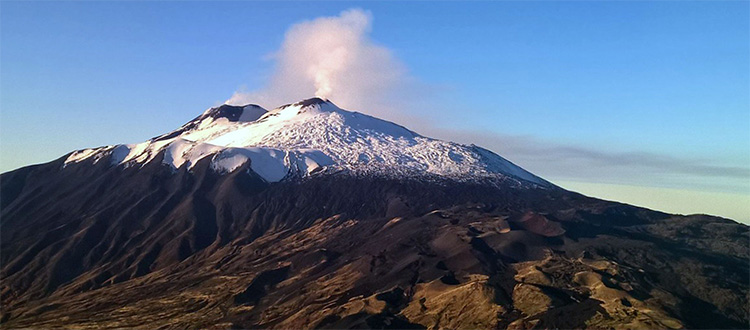Mount Etna
Mount Etna
Mount Etna (Mungibeddu or ‘a Muntagna in Sicilian) is a Sicilian volcanic complex originating in the Quaternary period. It is the Earth’s highest active volcano of the Eurasian plate. Its frequent eruptions throughout history have changed, sometimes profoundly, the surrounding landscape, several times coming to threaten the very people who over millennia have settled around it.
History of Etna
The first historical references to the eruptive activity of the volcano of Mount Etna are to be found in the writings of Thucydides, Diodorus and Pindar.
Mount Etna has evolved over the ages through a process of construction and destruction begun around 570,000 years ago. Where it sits it is believed there was once a wide gulf in the contact point between the Euroasian and African plates.
Major volcanic activity in the past was linked to that of the central system, which in recent times has affected other new summit mouths.
In 2007 the New Southeast Crater was formed following intense and frequent activity on the island of Stromboli where lava spurted like fountains. Between 2011 and 2013 the crater’s size grew to the height of previous older craters.
Etymology of the name Mount Etna
The etymology of the name Etna has always been the subject of much debate. It seems to go back to the Ancient Greek pronunciation itacista of the name Aitna (aitho i.e. to burn). Mount Etna was known in Roman times as Aetna.
Writings in Arabic referred to it as the mountain or the fire mountain. This name later became Mons Gibel from the Latin mons and the Arabic Jebel, which then became Mongibello. The name Mongibello remained in common use for a long time. Some still call Mount Etna by this name. Another theory is that it derives from Mulciber , one of the names by which the Latin god Vulcan was known.



